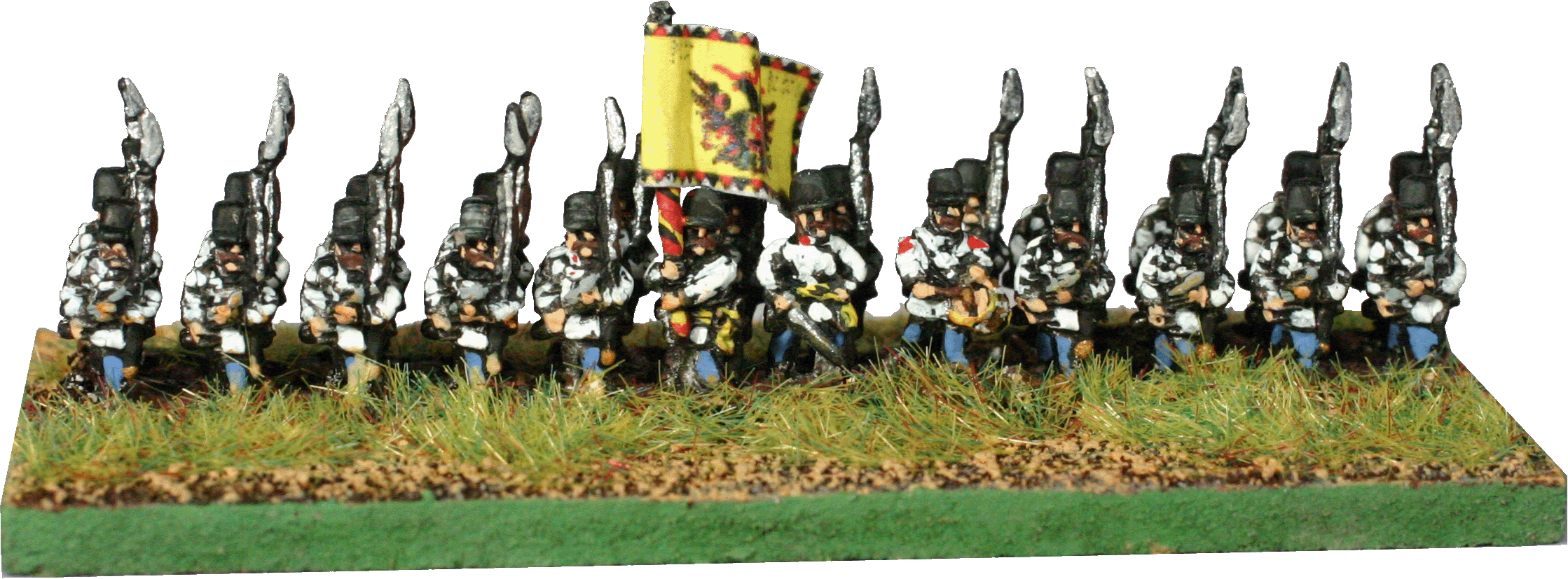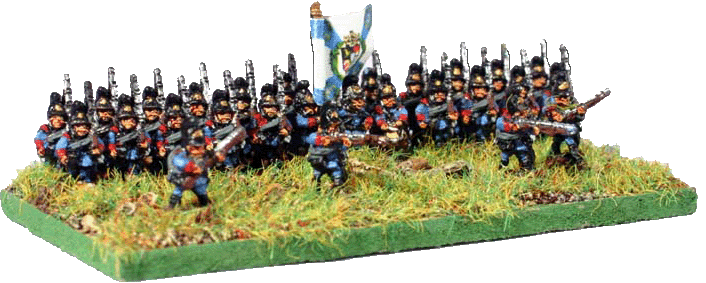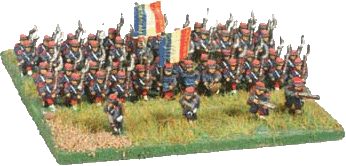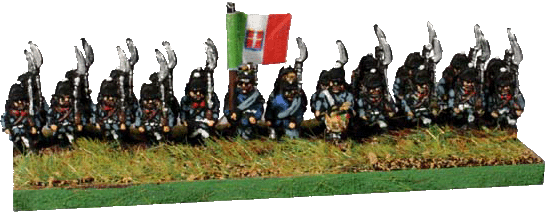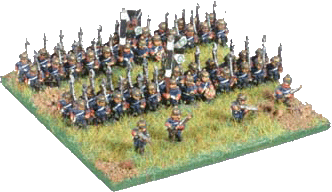LATE
NINETEENTH CENTURY
The latter half of the nineteenth century was one of tension and turmoil in central Europe. The main causes for this were increasing dominance of the Prussian state which was attempting to increase its political, economic and military influence over its neighbours, and the continuing deterioration of Austria's dominance in the region. When this was combined with the social upheaval and various nationalistic uprisings and movements the result was instability and conflict.
The Baccus Ranges currently cover three of the most important conflicts of the period, providing figures for the Austrian, French, Italian and Prussian armies of the period. We will be adding others over the next few months.
The Risorgimento (Italian: il Risorgimento, or "The Resurgence") was the political and social movement that annexed different states of the Italian peninsula into the single state of Italy in the 19th century. A number of factions and individuals had been striving to acheive this goal since the end of the Napoleonic Wars, but it was the campaigns of 1859 that saw the first major step forward when the allied Piedmontese and French armies were victorious over the Hapsburg forces at the battles of Magenta and Solferino. The following months saw the annexation of large parts of formerly independent Italian states into the expanded Kingdom of Sardinia.
In 1866 the King Victor Emmanual took advantage of the fact the Austria was at war with Prussia to attempt an invasion and annexation of Venetia. Although this was not successful militarily the weakness of the Austrian position meant that Venetia was annexed by Sardinia. Austrian rule in Italy was effectively over.
AUSTRO-PRUSSIAN WAR 1866
The DeutscherKrieg of 1866 Prussia and Austria were in confrontation over Schleswig-Holstein, a state shared by both countries following the 1864 war with Denmark. Bismarck inflamed the confrontation, hoping that France, Italy and Russia would leave them to it. The question was, would the Prussians be able to stand against the might of the Austrian Imperial Army?
In 1860 the German parliament had halted the plans of King Wilhelm to reform the Prussian army in reply to a crisis in the state. In reaction to this the king appointed Bismarck as his Prime Minister. Bismarck was a hardliner who made the changes to the army despite any opposition. Bismarck’s, and Wilhelm’s, aim in making the Prussian king’s position stronger in Parliament, either with or without Austria, had been achieved.
FRANCO-PRUSSIAN WAR 1870
The emergence of Prussia as the leading German power and the increasing unification of the German states were viewed with apprehension by Napoleon III after the Prussian victory in the Austro-Prussian War of 1866. Bismarck, at the same time, deliberately encouraged the growing rift between Prussia and France in order to bring the states of S Germany into a national union. He made sure of Russian and Italian neutrality and counted correctly on British neutrality. War preparations were pushed on both sides, with remarkable inefficiency in France and with astounding thoroughness in Prussia.
The immediate pretext for war presented itself when the throne of Spain was offered to a prince of the house of Hohenzollern-Sigmaringen, a branch of the ruling house of Prussia. The offer, at first accepted on Bismarck's advice, was rejected (July 12) after a strong French protest. But the aggressive French foreign minister, the duc de Gramont, insisted on further Prussian assurances, which King William I of Prussia (later Emperor William I) refused. Bismarck, by publishing the famous Ems dispatch, inflamed French feeling, and on July 19, France declared war.
Figure
Format
Line and Guard infantry are based four figures to a strip, facing forward,
on a 20mm frontage. Light Infantry (four to a strip), and Mounted troops
(three to a strip), are based in file for cutting and rebasing. Foot Command
strips, (Soldier Officer, Ensign and Drummer) are included in all Line
and Guard Infantry packs at a rate of four strips of command to twenty
of line. I can vary this proportion on request. Mounted Command strips
(Trooper, Trumpeter and Officer) are included in all packs at a rate of
five strips of command to ten of line. I can vary this proportion on request.
Artillery packs contain 4 cannon each with 4 crew.
VAT
Value Added Tax at 20% must be charged on all goods sold within the EU.
Non-EU residents are not eligible for this tax and wil be charged at the
non-VAT rate.
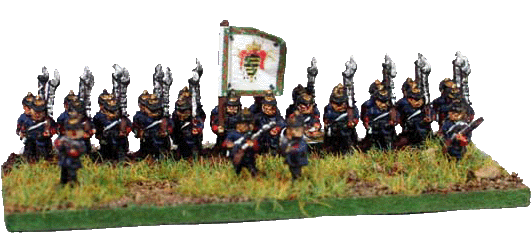 |
|
